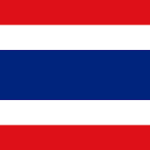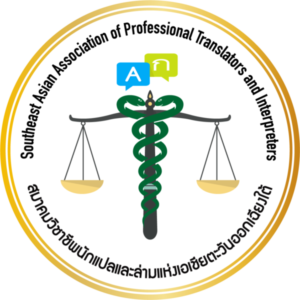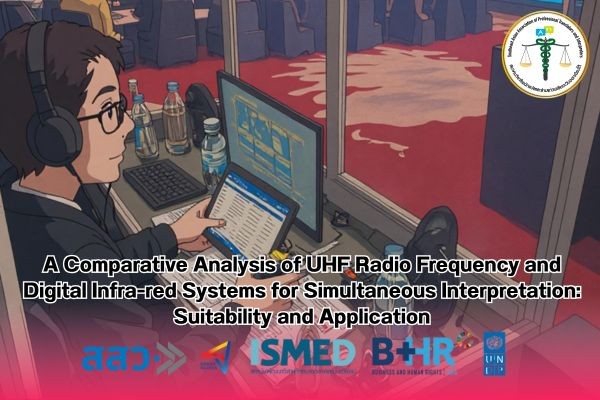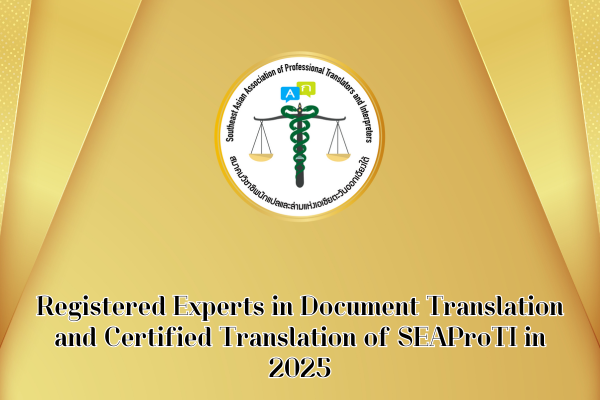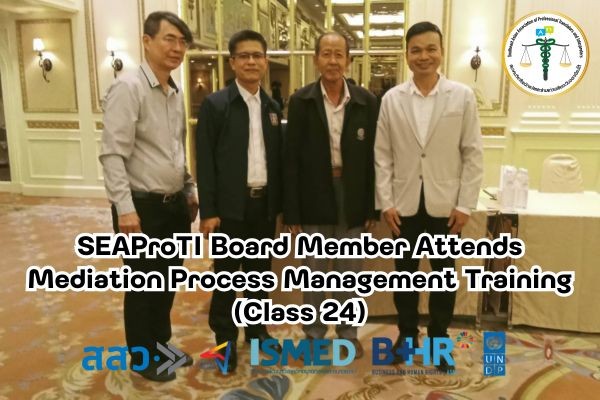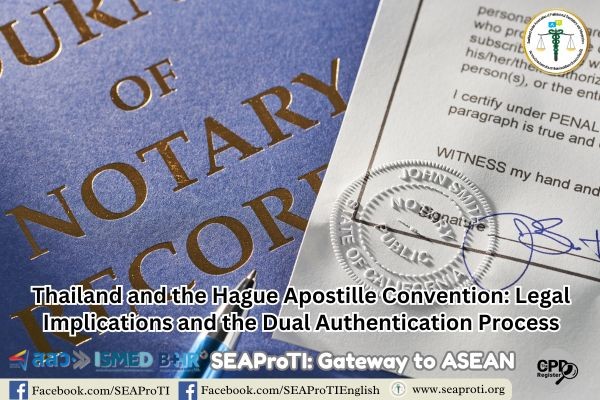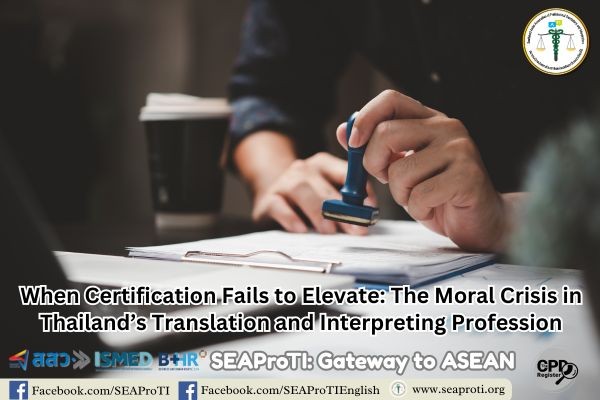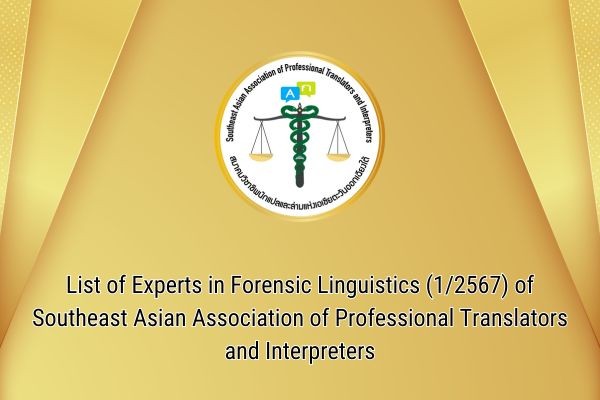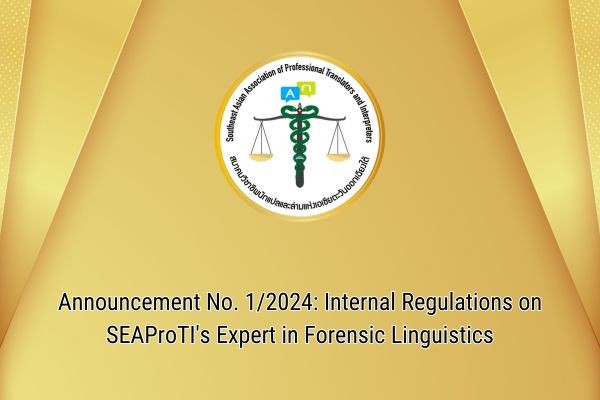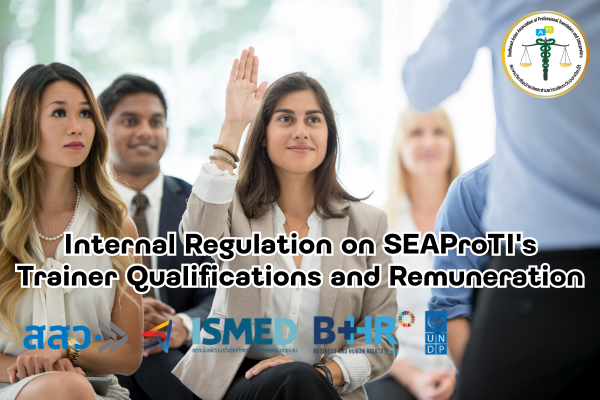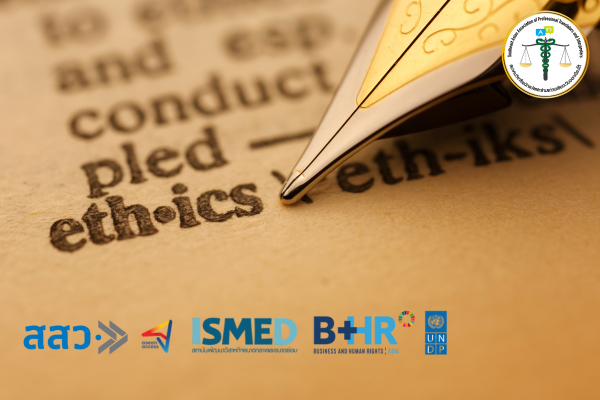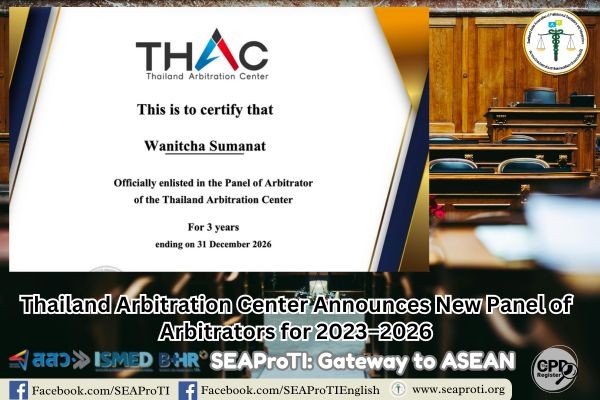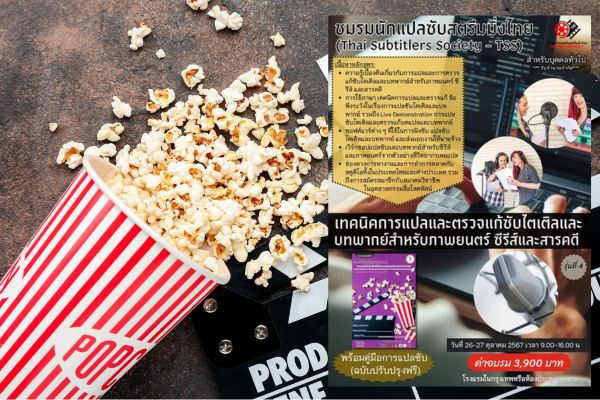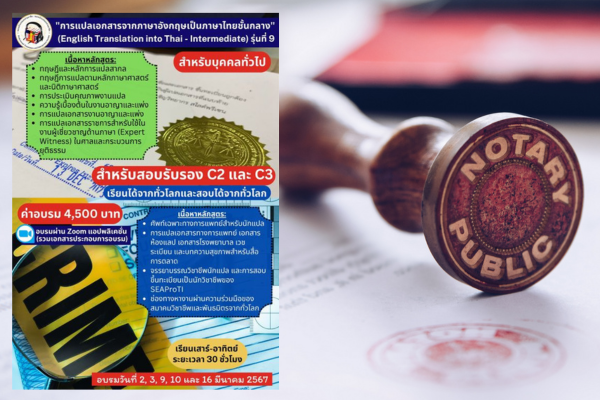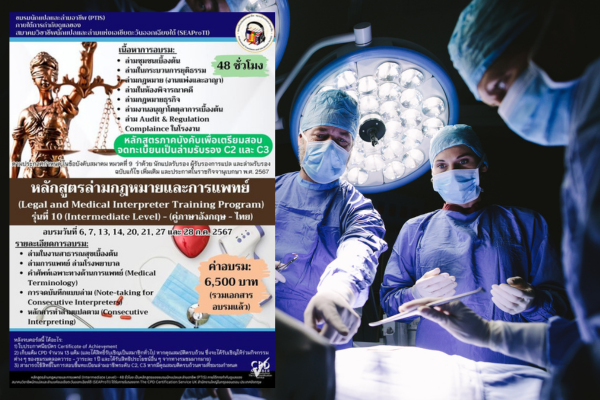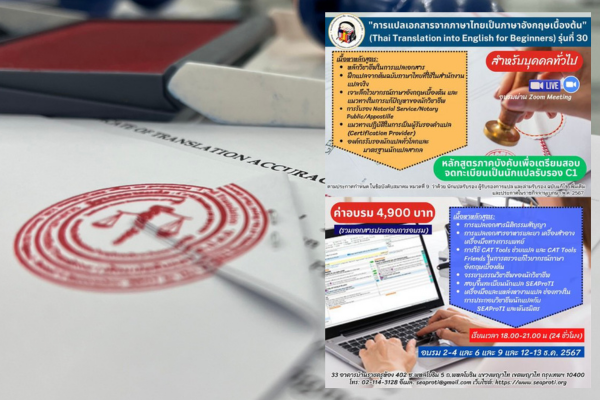A Comparative Analysis of UHF Radio Frequency and Digital Infra-red Systems for Simultaneous Interpretation: Suitability and Application
9 August 2025, Bangkok – The choice of audio transmission systems for simultaneous interpretation plays a crucial role in sound quality, audience experience, and interpreter efficiency. This article examines the differences between UHF Radio Frequency and Digital Infra-red systems in terms of technology, sound quality, installation time, cost, and suitability for various event types, drawing on academic sources and industry documentation.
Introduction
Simultaneous interpretation audio distribution systems can be classified into several categories based on the transmission technology. Currently, UHF Radio Frequency and Digital Infra-red are two of the most common systems used in conferences and interpretation events. Understanding the advantages, limitations, and suitability of each system helps event organizers make informed choices that balance quality and budget considerations (Bosch, 2018; Shure, 2020).
Technology and Key Features
UHF Radio Frequency
- Operating Principle: Uses Ultra High Frequency (UHF) radio waves, typically within the 700–806 MHz range, to transmit the interpreter’s audio to the audience.
- Sound Quality: Clear and suitable for speech-based events.
- Installation Time: 45–60 minutes for a setup with one interpreter booth.
- Cost: More economical compared to Digital Infra-red.
- Limitations: May be susceptible to interference from other wireless devices operating in similar frequency ranges.
Digital Infra-red
Operating Principle: Uses digital infrared light to transmit audio, requiring a line-of-sight between the transmitter and the receiver.
Sound Quality: Clear, with high resistance to radio frequency interference.
Installation Time: 60–120 minutes for a setup with one interpreter booth in a conference room accommodating up to 200 seats.
Cost: Generally higher than UHF systems due to more complex equipment and installation requirements.
Limitations: Performance may be reduced if the infrared signal path is obstructed by pillars, partitions, or other barriers.
Comparative Advantages and Limitations
| Factor | UHF Radio Frequency | Digital Infra-red |
|---|---|---|
| Transmission Tech | Radio waves (700–806 MHz) | Digital infrared light |
| Sound Quality | Clear but may suffer from RF interference | Clear, immune to RF interference |
| Data Security | Moderate (susceptible to eavesdropping with matching receivers) | High (infrared does not penetrate walls) |
| Cost | Lower | Higher |
| Installation Time | Faster (45–60 minutes) | Slower (60–120 minutes) |
| Spatial Flexibility | Suitable for indoor and outdoor use | Best for controlled indoor environments |
Suitability for Event Types
UHF Radio Frequency
Best suited for events requiring quick setup, limited budget, or outdoor use, such as workshops, press conferences, or field-based activities.
Digital Infra-red
Ideal for events demanding high signal security, immunity from interference, and controlled environments, such as diplomatic meetings, international organization conferences, or high-level corporate meetings in enclosed spaces.
Conclusion
Both UHF Radio Frequency and Digital Infra-red systems offer distinct strengths and limitations. The choice depends on key factors such as budget, installation time, signal security, and venue conditions. UHF systems are more suitable when speed and cost-effectiveness are priorities, while Digital Infra-red is preferable when maximum security and optimal sound quality in controlled environments are required.
References
- Bosch Security Systems. (2018). Integrus digital infrared language distribution system: Technical specifications. Bosch.
- Shure Incorporated. (2020). Wireless systems guide: Understanding UHF and infrared technology. Shure.
- International Organization for Standardization. (2017). ISO 20108: Simultaneous interpreting — Quality and transmission of sound and image input — Requirements. ISO.
About SEAProTI Certified Translators, Certification Providers, and Interpreters
The Southeast Asian Association of Professional Translators and Interpreters (SEAProTI) has published official guidelines and eligibility criteria for individuals seeking registration as Certified Translators, Translation Certification Providers, and Certified Interpreters under Chapter 9 and Chapter 10 of the Royal Thai Government Gazette, issued by the Secretariat of the Cabinet, Office of the Prime Minister, on 25 July 2024 (Vol. 141, Part 66 Ng, p. 100).
Full text available at: Certified Translators, Certification Providers, and Certified Interpreters. The Royal Thai Government Gazette
การเปรียบเทียบระบบ UHF Radio Frequency และ Digital Infra-red สำหรับงานแปลภาษาแบบทันที: ความเหมาะสมและการเลือกใช้งาน
9 สิงหาคม 2568, กรุงเทพมหานคร – การเลือกใช้ระบบถ่ายทอดเสียงสำหรับงานแปลภาษาแบบทันที (Simultaneous Interpretation) เป็นปัจจัยสำคัญที่ส่งผลต่อคุณภาพเสียง ประสบการณ์ผู้ฟัง และประสิทธิภาพการทำงานของล่าม บทความนี้วิเคราะห์ความแตกต่างระหว่าง UHF Radio Frequency และ Digital Infra-red ในด้านเทคโนโลยี คุณภาพเสียง ระยะเวลาติดตั้ง ค่าใช้จ่าย และความเหมาะสมต่อประเภทงาน โดยอ้างอิงข้อมูลจากแหล่งวิชาการและผู้ให้บริการด้านอุปกรณ์การประชุม
บทนำ
ระบบถ่ายทอดเสียงสำหรับงานล่ามสามารถแบ่งออกได้หลายประเภทตามเทคโนโลยีที่ใช้ส่งสัญญาณ ในปัจจุบัน UHF Radio Frequency และ Digital Infra-red เป็นระบบหลักที่พบได้บ่อยในงานประชุมและการแปลภาษาแบบทันที การทำความเข้าใจข้อดี ข้อจำกัด และความเหมาะสมของแต่ละระบบจะช่วยให้ผู้จัดงานสามารถเลือกเทคโนโลยีที่ตอบโจทย์ด้านคุณภาพและงบประมาณได้อย่างเหมาะสม (Bosch, 2018; Shure, 2020)
เทคโนโลยีและคุณสมบัติหลัก
UHF Radio Frequency
- หลักการทำงาน: ใช้คลื่นวิทยุในช่วง Ultra High Frequency (UHF) ประมาณ 700–806 MHz ในการส่งสัญญาณเสียงจากล่ามไปยังผู้ฟัง
- คุณภาพเสียง: คมชัด เหมาะสำหรับการประชุมที่ต้องการความชัดเจนของถ้อยคำ
- ระยะเวลาติดตั้ง: 45–60 นาที สำหรับระบบพร้อมตู้ล่าม 1 ตู้
- ค่าใช้จ่าย: ค่อนข้างประหยัดเมื่อเทียบกับ Digital Infra-red
- ข้อจำกัด: อาจมีสัญญาณรบกวนจากอุปกรณ์ไร้สายอื่นที่ใช้ย่านความถี่ใกล้เคียง
Digital Infra-red
หลักการทำงาน: ใช้แสงอินฟราเรดดิจิทัล (Digital Infra-red) ในการส่งสัญญาณเสียง ซึ่งต้องการการมองเห็นตรง (line-of-sight) ระหว่างเครื่องส่งและเครื่องรับ
คุณภาพเสียง: คมชัด มีความต้านทานสัญญาณรบกวนจากคลื่นวิทยุสูง
ระยะเวลาติดตั้ง: 60–120 นาที สำหรับระบบพร้อมตู้ล่าม 1 ตู้ ในห้องประชุมไม่เกิน 200 ที่นั่ง
ค่าใช้จ่าย: สูงกว่าระบบ UHF เนื่องจากใช้อุปกรณ์และการติดตั้งที่ซับซ้อนกว่า
ข้อจำกัด: ประสิทธิภาพลดลงหากมีสิ่งกีดขวางเส้นทางแสง เช่น เสา หรือฉากกั้น
การเปรียบเทียบข้อดีและข้อจำกัด
| ปัจจัย | UHF Radio Frequency | Digital Infra-red |
|---|---|---|
| เทคโนโลยีส่งสัญญาณ | คลื่นวิทยุ (700–806 MHz) | แสงอินฟราเรดดิจิทัล |
| คุณภาพเสียง | คมชัด แต่มีโอกาสถูกรบกวนจากสัญญาณวิทยุอื่น | คมชัด ปลอดภัยจากสัญญาณรบกวนวิทยุ |
| ความปลอดภัยของข้อมูล | ปานกลาง (สามารถดักฟังได้หากใช้เครื่องรับความถี่เดียวกัน) | สูง (แสงอินฟราเรดไม่ทะลุกำแพง) |
| ค่าใช้จ่าย | ต่ำกว่า | สูงกว่า |
| เวลาในการติดตั้ง | เร็วกว่า (45–60 นาที) | ช้ากว่า (60–120 นาที) |
| ความยืดหยุ่นพื้นที่ | ใช้ได้ทั้งในและนอกอาคาร | เหมาะกับในอาคารที่ควบคุมแสงและเส้นทางสัญญาณได้ |
ความเหมาะสมต่อประเภทงาน
UHF Radio Frequency
เหมาะสำหรับงานที่ต้องการติดตั้งรวดเร็ว งบประมาณจำกัด และอาจต้องการใช้งานกลางแจ้ง เช่น งานสัมมนาเชิงปฏิบัติการ การแถลงข่าว หรือกิจกรรมภายนอกสถานที่
Digital Infra-red
เหมาะสำหรับงานที่ต้องการความปลอดภัยของสัญญาณสูง ปราศจากการรบกวน และควบคุมพื้นที่ได้ เช่น การประชุมทางการทูต งานองค์กรระหว่างประเทศ หรือการประชุมในห้องปิดที่ต้องการความเป็นส่วนตัวสูง
สรุป
ทั้ง UHF Radio Frequency และ Digital Infra-red มีจุดแข็งและข้อจำกัดเฉพาะตัว การเลือกใช้งานขึ้นอยู่กับปัจจัยหลัก ได้แก่ งบประมาณ ระยะเวลาติดตั้ง ความปลอดภัยของสัญญาณ และลักษณะพื้นที่ หากต้องการติดตั้งรวดเร็วและประหยัด UHF อาจเป็นทางเลือกที่เหมาะสม แต่หากเน้นความปลอดภัยและคุณภาพสัญญาณสูงสุดในสภาพแวดล้อมควบคุม Digital Infra-red จะตอบโจทย์มากกว่า
เอกสารอ้างอิง
- Bosch Security Systems. (2018). Integrus digital infrared language distribution system: Technical specifications. Bosch.
- Shure Incorporated. (2020). Wireless systems guide: Understanding UHF and infrared technology. Shure.
- International Organization for Standardization. (2017). ISO 20108: Simultaneous interpreting — Quality and transmission of sound and image input — Requirements. ISO.
เกี่ยวกับนักแปลรับรอง ผู้รับรองการแปล และล่ามรับรองของสมาคมวิชาชีพนักแปลและล่ามแห่งเอเชียตะวันออกเฉียงใต้
สมาคมวิชาชีพนักแปลและล่ามแห่งเอเชียตะวันออกเฉียงใต้ (SEAProTI) ได้ประกาศหลักเกณฑ์และคุณสมบัติผู้ที่ขึ้นทะเบียนเป็น “นักแปลรับรอง (Certified Translators) และผู้รับรองการแปล (Translation Certification Providers) และล่ามรับรอง (Certified Interpreters)” ของสมาคม หมวดที่ 9 และหมวดที่ 10 ในราชกิจจานุเบกษา ของสำนักเลขาธิการคณะรัฐมนตรี ในสำนักนายกรัฐมนตรี แห่งราชอาณาจักรไทย ลงวันที่ 25 ก.ค. 2567 เล่มที่ 141 ตอนที่ 66 ง หน้า 100 อ่านฉบับเต็มได้ที่: นักแปลรับรอง ผู้รับรองการแปล และล่ามรับรอง
